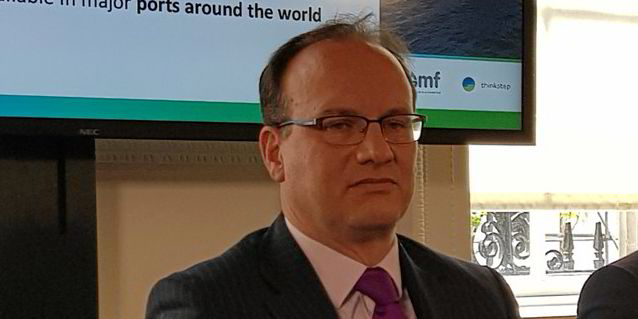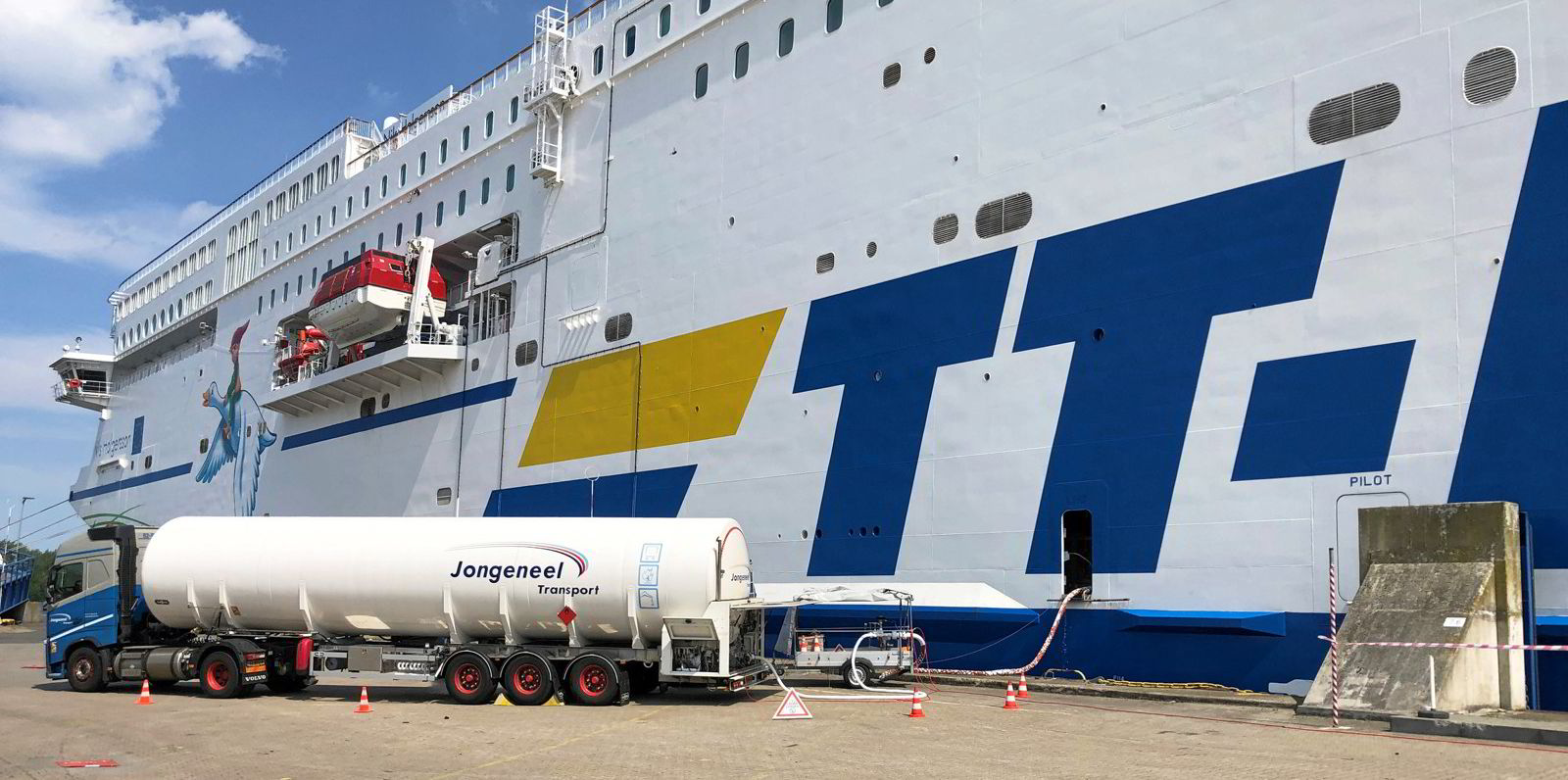Large volumes of green ammonia and methanol fuels will be needed when used as drop-in blends to cut enough greenhouse gas emissions to match the reductions offered by LNG.
Unveiling a new piece of analysis, SEA-LNG chief operating officer Steve Esau told TradeWinds that LNG can cut up to 23% of GHG emissions on a well-to-wake basis against those of very low-sulphur fuel oil (VLSFO).
In comparison, methanol measures up at around 14% higher than VLSFO’s emissions, ammonia 47% higher and liquid hydrogen 64% higher.
Esau said that when those fuels become available in their “green” or renewable forms, a 30% drop-in of green methanol and a 50% drop-in of green ammonia will be needed just to achieve parity on emissions with fossil LNG.
More expensive
On a fleet basis, the volumes of green methanol and ammonia are not going to be available at the quantities needed, so they will need to be blended with their fossil versions just to bring emissions down to VLSFO levels, he explained.
Esau said methanol and ammonia are already more expensive to produce than LNG.
The renewable versions of methanol and ammonia are also likely to cost three to five times their fossil equivalents, making these decarbonisation pathways far more expensive, SEA-LNG added.
Esau was speaking as SEA-LNG urged industry players to ensure they are comparing like with like when assessing alternative marine fuels.
He said there is a frustration that LNG gets “pigeon-holed” in its black or grey corner, when evidently there is a pathway to bio-LNG and synthetic LNG.
Instead, he said, when LNG is compared with methanol or ammonia, it is always green methanol or green ammonia versus fossil LNG.
“We feel that is a little disingenuous and misleading,” Esau said. “What we are trying to do is inform the discussion a little better. We need to think more not just about the final destination but around the pathways and how we get there.”
He stressed that bio-LNG is already available and being used as a drop-in fuel in Europe and North America: “It is there, it is being used and it is scaling.”
On LNG’s synthetic pathway, Esau said the constraint is the same as for e-methanol and ammonia: it is about producing enough hydrogen. He said the whole energy transition is based around scaling up renewable electricity capacity that will then enable the production of hydrogen and e-fuels.
SEA-LNG chairman Peter Keller said there will be great competition among industry and domestic use for renewable fuels.
“We know where maritime is going to come in,” he said. “It is going to be last. That’s just the stark reality.”
Asked about the recent rise in enquiry from owners for up to 50 methanol dual-fuel newbuildings, Keller contrasted this with a DNV estimate that by the end of 2022, around 1,000 LNG dual-fuel ships will be either trading or on order.
He said any prudent owner or operator would test different future fuelling scenarios.
“With someone like Maersk leading the pack, that’s going to happen,” Keller added — an oblique reference to the Danish line’s choice of methanol for its boxship newbuildings.
“That’s why people enjoy horse races. Everybody has a different view of what the horse looks like. And just because it comes in last, doesn’t mean he’s not a good-looking horse.”








